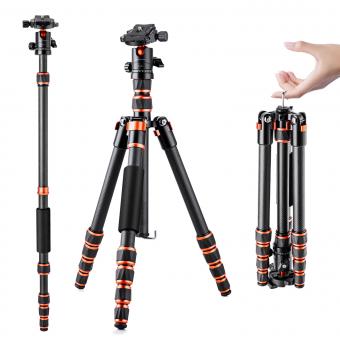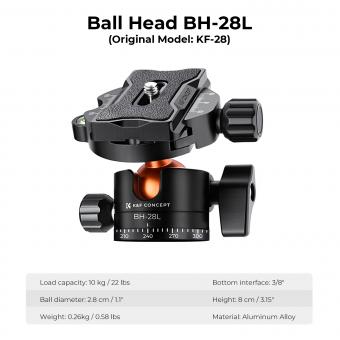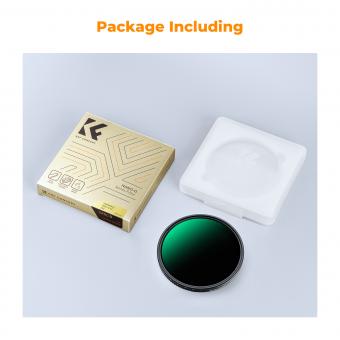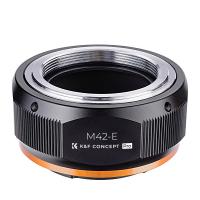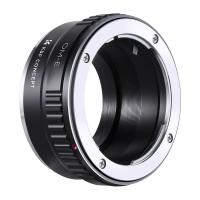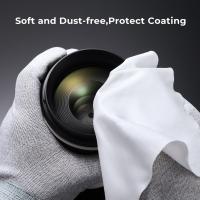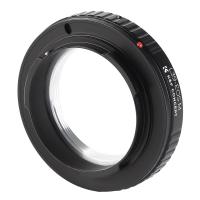How To Sterilize Fiber Optic Endoscope ?
Fiber optic endoscopes can be sterilized using different methods, depending on the type of endoscope and the manufacturer's recommendations. One common method is to use a high-level disinfectant solution, such as glutaraldehyde or hydrogen peroxide, which can kill most microorganisms, including viruses and bacteria. The endoscope is first cleaned with a detergent solution to remove any debris or organic matter, then immersed in the disinfectant solution for a specified time, usually between 20 and 45 minutes. After the disinfection process, the endoscope is rinsed with sterile water and dried with a sterile cloth or air. Some endoscopes may also be sterilized using ethylene oxide gas or steam autoclaving, but these methods require special equipment and may not be suitable for all types of endoscopes. It is important to follow the manufacturer's instructions and guidelines for the specific endoscope model to ensure proper sterilization and avoid damage to the instrument.
1、 Chemical Sterilization
Chemical sterilization is one of the most common methods used to sterilize fiber optic endoscopes. This method involves the use of chemical agents to kill microorganisms and other pathogens that may be present on the surface of the endoscope. The most commonly used chemical agents for sterilization include glutaraldehyde, hydrogen peroxide, and peracetic acid.
To sterilize a fiber optic endoscope using chemical sterilization, the following steps should be followed:
1. Clean the endoscope thoroughly using a detergent solution to remove any visible debris or organic matter.
2. Rinse the endoscope with water to remove any residual detergent.
3. Immerse the endoscope in the chemical sterilant solution for the recommended time period, which can vary depending on the type of sterilant used.
4. Rinse the endoscope with sterile water to remove any residual sterilant.
5. Dry the endoscope thoroughly before use.
It is important to note that chemical sterilization can be harsh on the endoscope and may cause damage over time. Therefore, it is important to follow the manufacturer's instructions for sterilization and to use the recommended sterilant solution. Additionally, some studies have suggested that chemical sterilization may not be effective against certain types of microorganisms, such as prions, which can cause diseases like Creutzfeldt-Jakob disease. Therefore, it is important to consider alternative sterilization methods, such as steam sterilization, for endoscopes that may be exposed to prions.
2、 High-Level Disinfection
High-Level Disinfection is the recommended method for sterilizing fiber optic endoscopes. This process involves the use of chemical disinfectants that are capable of killing all microorganisms, including bacteria, viruses, and fungi. The process is effective in eliminating the risk of infection transmission from one patient to another.
The first step in the process is to clean the endoscope thoroughly using a detergent solution. This removes any debris or organic matter that may be present on the surface of the endoscope. Once the endoscope is clean, it is rinsed with water to remove any remaining detergent.
The next step is to immerse the endoscope in a high-level disinfectant solution. The solution should be prepared according to the manufacturer's instructions and should be used within the recommended time frame. The endoscope should be completely submerged in the solution for the recommended amount of time, which is typically between 20 and 30 minutes.
After the endoscope has been disinfected, it should be rinsed with sterile water to remove any residual disinfectant. The endoscope should then be dried thoroughly before being stored in a clean, dry environment.
It is important to note that the process of high-level disinfection should be performed by trained professionals who are familiar with the specific requirements for the particular type of endoscope being sterilized. Additionally, the process should be monitored regularly to ensure that it is effective in eliminating all microorganisms.
In light of the COVID-19 pandemic, it is recommended to follow the latest guidelines from the Centers for Disease Control and Prevention (CDC) and the World Health Organization (WHO) regarding the sterilization of medical equipment, including fiber optic endoscopes. These guidelines may include additional steps or precautions to ensure the safety of patients and healthcare workers.
3、 Sterilization with Ethylene Oxide Gas
How to sterilize fiber optic endoscope? One effective method is sterilization with Ethylene Oxide Gas. This method involves exposing the endoscope to a gas that is known to kill microorganisms, including bacteria, viruses, and fungi. Ethylene Oxide Gas is a colorless and odorless gas that is highly effective in sterilizing medical equipment.
To sterilize a fiber optic endoscope with Ethylene Oxide Gas, the endoscope is first cleaned and disinfected using a high-level disinfectant. Once the endoscope is clean, it is placed in a sterilization chamber and exposed to Ethylene Oxide Gas. The gas penetrates the endoscope and kills any remaining microorganisms.
After the sterilization process is complete, the endoscope is aerated to remove any residual gas. This is an important step as Ethylene Oxide Gas can be harmful to humans if inhaled. The endoscope is then tested to ensure that it is sterile and safe to use.
It is important to note that Ethylene Oxide Gas sterilization is a highly regulated process and should only be performed by trained professionals. Additionally, there are some concerns about the potential health risks associated with Ethylene Oxide Gas exposure. As a result, some healthcare facilities are exploring alternative sterilization methods, such as hydrogen peroxide gas plasma sterilization.
In conclusion, sterilization with Ethylene Oxide Gas is an effective method for sterilizing fiber optic endoscopes. However, it should only be performed by trained professionals and alternative sterilization methods may be considered due to potential health risks.
4、 Sterilization with Hydrogen Peroxide Gas Plasma
How to sterilize fiber optic endoscope? One effective method is sterilization with hydrogen peroxide gas plasma. This method has been widely used in healthcare facilities due to its effectiveness in killing microorganisms and its compatibility with various medical devices, including fiber optic endoscopes.
The process involves placing the endoscope in a sterilization chamber where hydrogen peroxide gas is introduced. The gas is then ionized into plasma, which breaks down the hydrogen peroxide into reactive oxygen species that can penetrate the endoscope's channels and kill microorganisms. The process takes about an hour to complete and is followed by an aeration phase to remove any residual gas.
Studies have shown that hydrogen peroxide gas plasma sterilization is effective in eliminating various microorganisms, including bacteria, viruses, and fungi. It is also safe for the endoscope and does not cause any damage or corrosion to the device.
However, it is important to note that the effectiveness of sterilization with hydrogen peroxide gas plasma can be affected by various factors, such as the type of endoscope, the condition of the device, and the quality of the sterilization process. Therefore, it is crucial to follow the manufacturer's instructions and guidelines for proper sterilization and maintenance of the endoscope.
In conclusion, sterilization with hydrogen peroxide gas plasma is an effective method for sterilizing fiber optic endoscopes. It is safe for the device and can eliminate various microorganisms. However, proper maintenance and adherence to manufacturer's guidelines are essential for ensuring the effectiveness of the sterilization process.


